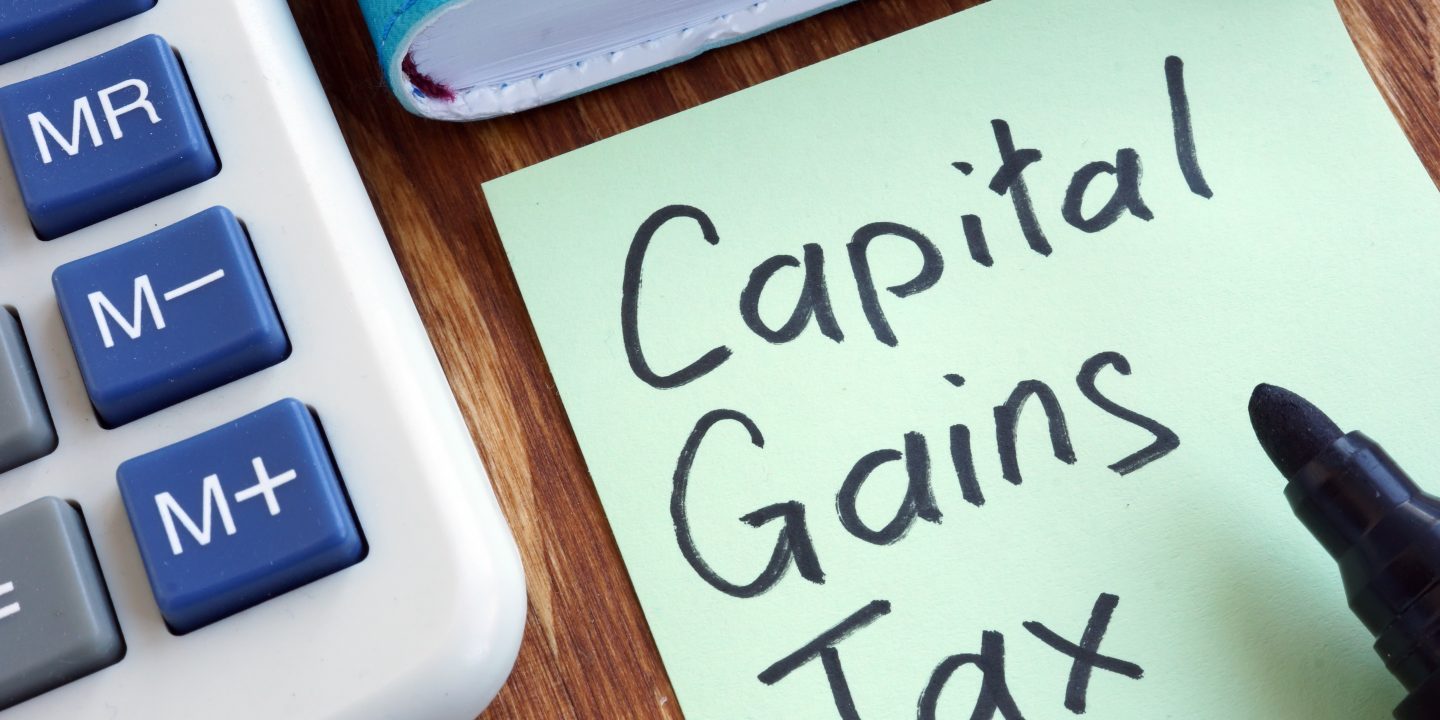
Capital gains tax in Canada is a tax applied to the profit earned from selling certain types of assets that have increased in value over time. This tax is calculated on 50% of the capital gain amount, and the resulting amount is added to your taxable income for the year. Here’s an overview of capital gains tax in Canada:
Taxable Portion: When you sell a property for more than you originally paid for it, the difference between the selling price and the original purchase price is considered a capital gain. In Canada, only 50% of the capital gain is subject to taxation. This means that you’re taxed on half of the actual gain.
Taxable Assets: Capital gains tax applies to various assets, including real estate properties, stocks, bonds, mutual funds, and other investments. For the purposes of this response, we’ll focus on capital gains tax related to property.
Principal Residence Exemption: One of the most significant exemptions in Canada is the Principal Residence Exemption (PRE). If the property you’re selling was your principal residence for every year you owned it, you might be eligible for a full exemption from capital gains tax. This exemption is designed to encourage homeownership and helps reduce the tax burden when selling your primary residence.
Joint Ownership: If a property is owned jointly with another person, each owner can claim their portion of the exemption if they meet the eligibility criteria. This can help maximize the benefit of the principal residence exemption.
Tax Calculation: The capital gain is calculated by subtracting the adjusted cost base (ACB) from the selling price of the property. The ACB includes the purchase price, certain acquisition costs, and any capital improvements you’ve made to the property over the years.
Tax Rate: The taxable portion of the capital gain is added to your taxable income for the year. The tax rate applied to this amount depends on your overall income tax bracket. This means that individuals with higher incomes might pay a higher rate on their capital gain’s.
Reporting and Filing: When you sell a property that’s not your principal residence, you need to report the capital gain on your tax return. You’ll need to complete Schedule 3 of your tax return, which provides details about the sale, including the purchase and selling prices, as well as any eligible deductions.
Capital Losses: If you have capital losses from other investments, such as stocks or bonds, you can use these losses to offset your capital gains. This can help reduce your overall tax liability.
Small Business Deduction: If you are selling a property that was used for a small business, you might be eligible for a capital gains deduction under certain conditions.
Inheritance and Gifts: If you inherit a property or receive it as a gift, the rules for calculating the capital gain differ. You’ll need to determine the property’s fair market value at the time of inheritance or gifting.
Non-Resident Taxation: If you’re a non-resident of Canada and sell Canadian property, there are specific tax rules that apply, including withholding tax requirements.
Consult a Professional: Capital gains tax can be complex, especially when dealing with investment properties or properties that are not your principal residence. It’s advisable to consult with a tax professional or accountant to ensure you’re following the correct rules and maximizing any available exemptions.
It’s important to note that tax laws can change, and the information provided here is based on the knowledge available up to December 2022. For the most accurate and up-to-date information, consult the Canada Revenue Agency (CRA) website or seek advice from a qualified tax professional.
Questions & Answers (Q & A)
Q: What is a capital gain?
A: A capital gain is the difference between the selling price of a property and its original purchase price. If the selling price is higher, it results in a capital gain.
Q: Are all types of property subject to capital gains tax in Canada?
A: No, not all types of property are subject to capital gains tax. While real estate properties are commonly subject to capital gains tax, personal-use properties like your primary residence can qualify for the Principal Residence Exemption, which can reduce or eliminate the capital gains tax.
Q: Are capital gains tax rates different for different types of assets in Canada?
A: The capital gains tax rates themselves are not different for different types of assets in Canada. However, the types of exemptions, deductions, and special treatments may vary depending on the asset. For instance, small business owners might have access to certain deductions when selling a property used for their business.
Q: How is capital gains tax calculated in Canada?
A: In Canada, only 50% of the capital gain is subject to taxation. The taxable amount is added to your income for the year, and you’re taxed according to your regular income tax bracket.
Example: Suppose you purchased a residential property for $300,000 several years ago. You decide to sell the property now for $450,000. This means you have a capital gain of $150,000 ($450,000 – $300,000).
In Canada, only 50% of the capital gain is subject to taxation. This means that you’ll only be taxed on half of the actual gain.
Calculation: Capital Gain = Selling Price – Purchase Price Capital Gain = $450,000 – $300,000 Capital Gain = $150,000
Taxable Portion = 50% of Capital Gain Taxable Portion = 50% of $150,000 Taxable Portion = $75,000
Now, let’s assume your marginal tax rate is 30%, which means you’ll be taxed at 30% on the taxable portion of the capital gain.
Tax Calculation: Tax on Taxable Portion = Taxable Portion × Marginal Tax Rate Tax on Taxable Portion = $75,000 × 0.30 Tax on Taxable Portion = $22,500
In this example, you would owe $22,500 in capital gains tax on the property sale.
Q: Are there any exemptions from capital gains tax on property in Canada?
A: Yes, there are a few exemptions:
Principal Residence Exemption: If the property you’re selling was your primary residence during the entire period you owned it, you may be eligible for a full or partial exemption from capital gains tax. This is not automatic, and you need to declare the property as your principal residence in your tax return.
Small Business Exemption: If you owned a small business and are selling your property that was used for the business, you might qualify for a capital gains deduction.
Gifts or Inheritance: If you received the property as a gift or inheritance, different rules might apply.
Q: Is there a specific holding period for properties to qualify for the Principal Residence Exemption?
A: There is no specific holding period required for properties to qualify for the Principal Residence Exemption in Canada. However, the property must have been your principal residence for each year you owned it.
Q: How is capital gains tax calculated if I use the property for both personal use and as a rental property?
A: If you use a property both as a principal residence and as a rental property, you’ll need to prorate the capital gains tax based on the portion of time it was used for each purpose. The time it was your principal residence may be eligible for the Principal Residence Exemption, while the rental period may be subject to capital gains tax.
Example: Suppose you purchased a property five years ago for $400,000. For the first three years, you lived in the property as your primary residence. Then, for the last two years, you rented it out. You decide to sell the property for $550,000.
Calculation:
Calculate Capital Gain: Capital Gain = Selling Price – Purchase Price Capital Gain = $550,000 – $400,000 Capital Gain = $150,000
Determine Personal Use Portion: Since you lived in the property for 3 out of 5 years, the personal use portion is 3/5 or 60%. The rental use portion is 2/5 or 40%.
Calculate Taxable Capital Gain for Personal Use: Taxable Capital Gain for Personal Use = Personal Use Portion × Capital Gain Taxable Capital Gain for Personal Use = 0.60 × $150,000 Taxable Capital Gain for Personal Use = $90,000
Calculate Taxable Capital Gain for Rental Use: Taxable Capital Gain for Rental Use = Rental Use Portion × Capital Gain Taxable Capital Gain for Rental Use = 0.40 × $150,000 Taxable Capital Gain for Rental Use = $60,000
Apply Principal Residence Exemption: Since you lived in the property for 3 years, those years may be eligible for the Principal Residence Exemption. Let’s assume that during these years, the property appreciated evenly. In this case, the exempted portion would be 3/5 or 60% of the total capital gain. Exempted Portion = Exempted Portion Percentage × Capital Gain Exempted Portion = 0.60 × $150,000 Exempted Portion = $90,000
Calculate Taxable Capital Gain: Taxable Capital Gain = Taxable Capital Gain for Personal Use + Taxable Capital Gain for Rental Use – Exempted Portion Taxable Capital Gain = $90,000 + $60,000 – $90,000 Taxable Capital Gain = $60,000
Apply 50% Inclusion Rate: In Canada, only 50% of the capital gain is subject to taxation. Taxable Portion = 50% × Taxable Capital Gain Taxable Portion = 0.50 × $60,000 Taxable Portion = $30,000
Calculate Tax Owed: Assuming a marginal tax rate of 30%: Tax Owed = Taxable Portion × Marginal Tax Rate Tax Owed = $30,000 × 0.30 Tax Owed = $9,000
In this example, you would owe $9,000 in capital gains tax on the sale of the property that was used for both personal and rental purposes.
Q: Are there any time limits for claiming the principal residence exemption?
A: Generally, you can only claim the principal residence exemption for the years the property was designated as your principal residence. However, the CRA (Canada Revenue Agency) introduced new reporting requirements starting in the 2016 tax year. You need to report the sale of your principal residence on your tax return, even if you don’t owe any taxes. Failure to report could result in penalties.
Q: Are there any additional taxes or fees when selling property in Canada?
A: Yes, there are additional costs associated with selling property, such as real estate agent commissions, legal fees, and potentially the Goods and Services Tax (GST) or the Harmonized Sales Tax (HST) on new construction properties.
Q: Can capital losses be used to offset capital gains on property?
A: Yes, capital losses from other investments or properties can be used to offset capital gains on property sales, reducing the overall tax liability.
Q: Can I carry forward capital losses to future years in Canada?
A: Yes, you can carry forward capital losses in Canada to offset capital gains in future years. Capital losses can be carried forward indefinitely until they are fully utilized.
Q: How is capital gains tax on property reported?
A: Capital gains tax is reported on your annual income tax return. You will need to complete Schedule 3 and include the necessary information about the property sale, including the sale price, purchase price, and any eligible deductions.
Q: Do non-residents of Canada pay capital gains tax on property?
A: Yes, non-residents who sell Canadian real estate are subject to withholding tax. The rate is a percentage of the property’s sale price and is intended to ensure that non-residents meet their Canadian tax obligations.
Q: Are there additional costs when selling property in Canada?
A: Yes, there are additional costs such as real estate agent commissions, legal fees, and potentially the Goods and Services Tax (GST) or the Harmonized Sales Tax (HST) on new construction properties.
Q: Can I avoid capital gains tax by reinvesting in another property?
A: Canada doesn’t have a specific provision like the U.S. 1031 exchange. However, there are strategies that may help minimize your tax liability, such as using the principal residence exemption or incorporating tax-efficient structures.
Q: Do I need to pay capital gains tax if I gift a property to someone?
A: Gifting a property can trigger certain tax consequences, including potential capital gains tax. When you gift a property, it’s considered a deemed disposition, and the fair market value of the property at the time of the gift may be subject to capital gains tax.







